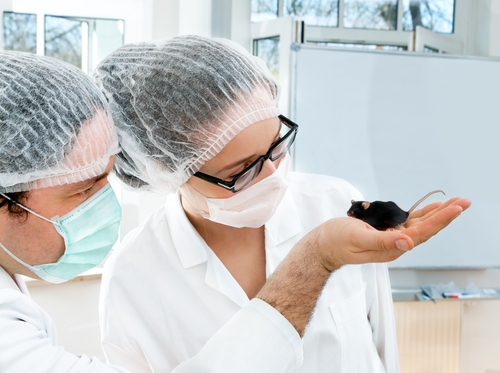IL-33 Seen to Restore Balance in Immune Response of Mice with Pulmonary Sarcoidosis

A potent signaling molecule called interleukin-33, or IL-33, can restore the balance and function of regulatory immune T-cells in mice with pulmonary sarcoidosis, a study showed.
The finding suggests that IL-33 may become an important target in preventing the immune-mediated inflammatory processes of pulmonary sarcoidosis.
The study, “Interleukin 33 ameliorates disturbance of regulatory T cells in pulmonary sarcoidosis,” was published in the journal International Immunopharmacology.
Sarcoidosis is an inflammatory disease characterized by the abnormal buildup in tissues and organs of clumps of immune cells known as granulomas. Although the cause of this disease remains unclear, a class of immune cells called regulatory T-cells, or Tregs, have been identified as important contributors.
In healthy conditions, Tregs are responsible for keeping the immune system’s response under control by preventing it from becoming overactive. In sarcoidosis, however, Tregs are found in increased levels in affected organs or tissue. With a poor capacity to suppress, they become unable to prevent an immune-driven inflammatory process.
Most treatment strategies for sarcoidosis rely on steroids or steroid-sparing medicine to inhibit inflammatory mechanisms.
Now, a team at Nanjing University Medical School in China set out to restore the activity of Tregs as a potential method of suppressing the development of sarcoidosis.
The researchers administrated either IL-33 or an inhibitor of interleukin-23 (IL-23) to mice with induced pulmonary sarcoidosis. These two signaling molecules are important regulators of Treg function. IL-33 enhances the proliferation and function of Tregs, while IL-23 is a strong inhibitor of IL-33-positive signals.
Treatment with either IL-33 or the IL-23 inhibitor was found to significantly reduce the levels of non-suppressive Tregs in the lungs of mice. When Treg cells collected from the lungs of mice with sarcoidosis were exposed to IL-33 treatment, they began to show enhanced inhibitory activity compared to untreated cells.
Further experiments confirmed that IL-33 could promote the switching of Tregs from a non-suppressive status to a newly balanced inhibitory and active state by reshaping several cellular processes that had prevented the cells from normal activity.
Overall, “these results indicated a crucial role for IL-33 in maintaining Tregs tolerance,” the researchers wrote, adding that IL-33 could be a potential therapeutic target to “be used in the treatment of pulmonary sarcoidosis.”
The team believes that “depending on the integrity and cytokine [signaling molecules] environment of sarcoidosis, it is conceivable that the available dose of IL-33 is protective rather than pro-inflammatory.”
The researchers emphasized that additional studies are needed to further examine IL-33’s role in balancing the activity of Treg cells in sarcoidosis.






